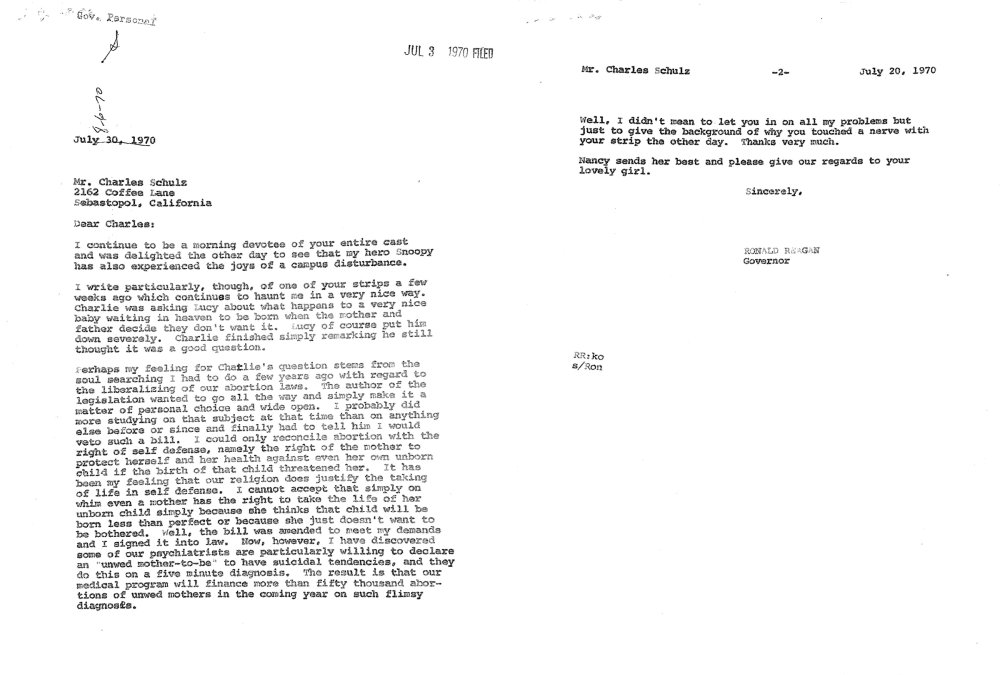
Category Archives: English
Physical Exercise Reducing Inflammation
Highly interesting articles in the journal Science. Last week it reported on how exercise destroys senescent cells in mature adults. This week it reports how this process prolongs youthful health. (Science 16 July, 2021, pg. 281 ff).
Cellular senescence is a phenomenon characterized by the cessation of cell division. In experiments conducted during the early 1960s, Leonard Hayflick and Paul Moorhead observed that normal human fetal fibroblasts in culture reach a maximum of approximately 50 cell population doublings before becoming senescent.
Cell senescence has been attributed to prevention of carcinogenesis, and more recently, aging, development, and tissue repair. Such cells play a role in the aging phenotype, in aging-associated diseases, and in frailty and sarcopenia. In addition, senescent astrocytes and microglia contribute to neurodegeneration.
Senescent cell load and the secretome increase as we age. This drives inflammation, tissue damage, further infection, inflammation-related pathology, and death.
The removal of senescent cells through physical activity such as physical work and exercise appears to reduce inflammation to below the “young” threshold, allowing disease resolution and survival.
So there’s much truth to what Helen Hayes reportedly said: “If you rest, you rust”.
Letter From Governor Ronald Reagan to Charles M. Schulz, Dated July 30, 1970
Gichin Funakoshi (船越 義珍)
How To Celebrate Each Christmas Multiple Times
by Reinhard Kargl
Commerce has tricked many people into believing that Christmas begins with Black Friday sales.
Of course, nothing could be further from the truth. The four weeks before Christmas are called “Advent”. Thereafter, Christmas begins with Holy Night (the night from December 24th to December 25th). Or does it?
Well, if you really love Christmas, you may actually enjoy it three (or even four) times. How come?
First of all, there are no historical records of the birth date of Jesus of Nazareth. So the chosen date for celebrating the birth of Jesus Christ was picked rather arbitrarily. However, it stands to reason that the date was chosen to coincide (roughly) with winter solstice. This natural event had been a sacred day ever since human civilization grasped the rudimentary fundamentals of celestial cycles. The Romans (as well as many other literate cultures) had of course more than just a basic understanding of this.
By the way, contrary to popular belief, Christmas is not the most important holiday in Christianity, nor was it even celebrated in the early beginnings.
In 330 AD, the Roman Empire split into two parts: the western half centered in Rome, and the eastern half centered in Constantinople. The churches of the Western Roman Empire continued to celebrate Christmas as a minor holiday on December 25.

But in the East, the birth of Jesus began to be celebrated in connection with the Epiphany, on January 6. This holiday was not primarily about the the birth of Jesus, but rather his baptism. The feast was introduced in Constantinople in 379, in Antioch towards the end of the fourth century ( probably in 388) and in Alexandria in the following century.
When it comes to marking days, all conventional, numerical calendar systems suffer from an astronomical problem: During the time it takes for the Earth to complete one full orbit around the Sun, our planet rotates 365.256 times around its own axis. What this means is that the day isn’t really 24 hours long. Earth spins once in about 24 hours with respect to the Sun, but once every 23 hours, 56 minutes, and 4 seconds with respect to other, distant, stars.
So one Earth year isn’t 365 days long, but precisely 365 days, 5 hours, 48 minutes and 46 seconds. How does one put that into a calendar when we define each 24-hour period as a “day”? And when we divide the year into 12 months – which, by the way, are all arbitrary, man-made definitions? There really are are only four natural demarkations in the year that play a major role in our lives: the two equinoxes and the two solstices, which mark the beginnings of each season.

For completeness, because Earth’s orbit isn’t a circle but an ellipsis, there are the two apsides, the two extreme points of Earth distance to the Sun: Aphelion (apoapsis) and perihelion (periapsis). But these two would have little to no practical effect except for those studying such things.

The Julian Calendar, was proposed by Julius Caesar in 46 BC and enacted by edict on January 1, 45 BC. No, Julius did’t invent it. It was a reform of an earlier Roman calendar and probably designed by Greek mathematicians and Greek astronomers such as Sosigenes of Alexandria.
Whoever did it, the Julian Calendar was undoubtedly one of mankind’s most remarkable intellectual accomplishments. But as all human explanations of natural phenomena, it is rather imperfect in that although its synchronization with the solar year is better than most other calendars, the deviations get bigger and bigger as time goes on. Eventually, the year’s four seasons and the calendar will become way off.
One can correct these deviations from the natural world by throwing in “leap time” – a strange concept in which we are basically making up days, months or even years. (In other words, we are violating the rules of science by purposely making our interpretation of the reality fit the observation).
In order to reduce the need for such calendar doctoring, Pope Gregory XIII in October 1582 introduced the Gregorian calendar as a correction of the Julian calendar.

This has liturgical significance since calculation of the date of Easter assumes that spring equinox in the Northern Hemisphere occurs on March. To correct the accumulated error, Pope Gregory ordained the date be advanced by ten days. (One can do that is one is pope).

Most Roman Catholic lands adopted the new calendar immediately. (Not that they had much of a choice). The clerical leaders of Protestant lands who did not recognize the pope’s authority of course protested. But eventually, they too ended up following suit over the following 200 years. (Not because Protestants admitted the pope’s new calendar was a good innovation, but because having two different calendars caused quite a bit of confusion. Let’s just say it wasn’t popular with the masses).
The British Empire (including the American colonies) adopted the Gregorian Calendar in 1752 with the Calendar (New Style) Act 1750. At that time, the divergence between the two systems had grown to eleven days.
This meant that Christmas Day on December 25 (“New Style”) was eleven days earlier than it would have been but for the Act, making “Old Christmas” (“Old Style”) on December 25 happen on January 5 (“New Style”).
In February 1800, the Julian calendar had yet another leap year but the Gregorian calendar did not. This moved Old Christmas to 6 January (“New Style”), which coincided with the Feast of the Epiphany.
For this reason, in some parts of the world, the Feast of the Epiphany, which is traditionally observed on 6 January, is sometimes referred to as “Old Christmas” or “Old Christmas Day”.
So where do we stand today? According to the Gregorian calendar, Western Christianity and part of the Eastern churches celebrate Christmas on December 25.
The Armenian Apostolic Church, the Armenian Evangelical Church, and some Anabaptists (such as the Amish people) still celebrate “Old Christmas Day” on January 6.
Meanwhile, most Oriental Orthodox and part of the Eastern Orthodox churches celebrate on January 7 (which corresponds to “Old Style” December 25).
Lastly, the Armenian Patriarchate of Jerusalem maintains the traditional Armenian custom of celebrating the birth of Christ on the same day as Theophany (January 6), but it uses the Julian calendar for the determination of that date. As a result, this church celebrates “Christmas” (actually, Theophany) on what the majority of the world now considers to be January 19 on its Gregorian calendar.

So there you have it! The dates of Christmas are neither prescribed by God nor nature, but by man. They are nothing but human convention, and they differ because of the problems inherent in making a calendar that accurately reflects nature, along with some religious differences. Celebrate as you wish!
Merry Christmas.
Halloween 2020
This will be the second full moon in October 2020, making it a so-called rare “Blue Moon”. Not only has there not been a full moon on All Hallow’s Eve since 2001, there won’t be another one until 2039. And for the first time tonight’s Blue Moon will be visible to most of the world in 75 years.
You will also see a red object near the moon tonight: that’s Mars. Also happening on Saturday night: Asteroid 2020 UX3 will be whizzing by Earth at a speed of 36,000 miles per hour. But don’t worry – experts who track this sort of stuff say it won’t hit us. But there’s another asteroid (2018VP1) making a close pass by Earth on Election Day.
Spooked yet?

John Lennon’s 80th Birthday
by Reinhard Kargl
John Lennon would have been 80 years old today. This is my favorite photograph of him. It was taken by Jürgen Vollmer in 1961, during an early Beatles gig in Hamburg, West Germany, at Wohlwillstraße 22, Jägerpassage 1.

The blurry figures in the foreground are: George Harrison (who died in 2001 in Los Angeles), Stuart Sutcliffe (died in 1962 in Hamburg), and Paul McCartney.
Jürgen Vollmer, who together with Astrid Kirchherr and Klaus Voormann befriended the Beatles in Hamburg, became a successful artist, musician, and record producer. His friendship and occasional collaboration especially with John Lennon, George Harrison and Ringo Starr continued throughout the decades.
In 1975, the photo was used for the cover of John Lennon’s solo album, “Rock ‘n’ Roll”.
Here is the location photographed in 2011.

German Unity Day
by Reinhard Kargl
Today is the 30th anniversary of an event that I once thought would never, ever happen: the unification of the two postwar Germanies: West Germany (Bundesrepublik Deutschland, or BRD) and East Germany (Deutsche Demokratische Republik, or DDR). What surprised me even more was that the East German government allowed itself to be dissolved peacefully, and that the whole transition, although certainly fraught with many problems, was successfully carried out with little violence.
To this day, I continue to be surprised by aspects I had not considered realistic. For example, I recently learned that there are some fascinating legal questions and unsettled arguments about the legal status and nature of the German nation-state.
The whole subject is highly contentious and complicated. At its roots are the complex problems with defining what “Germany” is supposed to be, and specifically, what the “German Reich” is. Students of history understand that this has been one of Europe’s fundamental problems for many centuries, and a reoccurring cause of wars between the European powers. This, and World War II, have made the whole issue a taboo subject in today’s Germany.
Complicating things is that historically, several imperial lines, such as the Habsburgs, have laid claim to the title of “German Emperor”, and all sought different solutions to the fragmentation of the German people across Europe. The circumstances leading to the collapse of the German monarchies after World War II, the establishment of the short-lived Weimar Republic, followed by its economic demise, and the subsequent rise of the “Third Reich”, are well documented.
What is less well known and discussed is what happened to Germany, or to the concept of the German Reich, after World War II.
After the war, the governments of each East and West Germany considered themselves the legitimate German governments of the legitimate successor states of the German Reich. This is not trivial, because being defined as “successor state” carries important consequences in international law.
But this is already where the agreements come to an end.
There are experts in international law, and circles, who call into question whether especially West Germany was, or is truly a successor state at all. These arguments are based on two different, competing lines of reasoning. One is that when the Third Reich was defeated, the whole German Reich, as a construct, became extinct. Consequently it cannot have a successor. The other line of reasoning asserts the opposite. It claims that since the German Reich was never formally dissolved, it still exists. However, the argument goes, West Germany could not be be a legitimate successor, because it was just an occupied territory, with a constitutional structure, a legal framework, and a government imposed by foreign governments, namely Britain, the U.S.A. and France. Even the borders of this brand new nation state were drawn by foreign powers. Furthermore, the people living in the western occupied zone were never consulted about the form of state that would govern them, it being a union of states governed by a federal republic. What is more, the people living in these territories didn’t consent, but were compelled to become citizens of this so-constructed nation state.
According to this line of reasoning, East Germany would have a more legitimate claim to be a successor state, and of being “the real Germany”. This theory was certainly maintained by the DDR’s government and used in Soviet propaganda, according to which the USSR was the only power that had first defeated, and then mercifully “liberated” Germany. Reorganized under socialist rules, of course, and arguably also without properly consulting the people living in the eastern occupied zone – at least after the border was sealed. At which point people who didn’t consent to become citizens of the socialist DDR had no alternatives, and thus were also compelled to become subjects of the socialist state, whether they wanted to or not.
The unification of the two Germanies 30 years ago has complicated matters even more. The treaty clearly specifies that the DDR ceased to exist. But then, according to one of the theories above, wouldn’t this mean that any legitimate successor state status would be extinguished?
There is also the argument that neither one of the two Germanies were legitimate successors of the German Reich. So is it in fact extinct? No so, some argue, pointing to interpretations of international law which seem to establish that a nation-state’s defeat in war does not obliterate the right of its people, which continues to have the right to exist and collectively choose whatever form of government it wants.
Today there are groups in modern day Germany which reject the unified federal republic’s claim of being the “the one and only real Germany”, unified or not. Some hardliners even claim that they therefore have the right to “opt out” and not be subject to laws of a nation they never consented to be citizens of. As a consequence, some of these groups refuse to pay taxes and fines, create what they claim to be institutions of the “German Reich” and issue their own, so-called “official documents” – none of which is recognized by the German Republic, any of its member states, the European Union, or the United Nations.
While these are certainly fringe groups who routinely (and not surprisingly) get slapped down by the courts of the new Germany, it appears that they might carry the age old “German question” into the 21st Century:
What and where is Germany?
America’s Obesity Epidemic Threatens Effectiveness of Any COVID Vaccine
By Sarah Varney, Kaiser Health News August 6, 2020; Photos: Chokniti Khongchum
For a world crippled by the coronavirus, salvation hinges on a vaccine.
But in the United States, where at least 4.6 million people have been infected and nearly 155,000 have died, the promise of that vaccine is hampered by a vexing epidemic that long preceded COVID-19: obesity.
Scientists know that vaccines engineered to protect the public from influenza, hepatitis B, tetanus and rabies can be less effective in obese adults than in the general population, leaving them more vulnerable to infection and illness. There is little reason to believe, obesity researchers say, that COVID-19 vaccines will be any different.

“Will we have a COVID vaccine next year tailored to the obese? No way,” said Raz Shaikh, an associate professor of nutrition at the University of North Carolina-Chapel Hill.
“Will it still work in the obese? Our prediction is no.”
More than 107 million American adults are obese, and their ability to return safely to work, care for their families and resume daily life could be curtailed if the coronavirus vaccine delivers weak immunity for them.
In March, still early in the global pandemic, a little-noticed study from China found that heavier Chinese patients afflicted with COVID-19 were more likely to die than leaner ones, suggesting a perilous future awaited the U.S., whose population is among the heaviest in the world.
And then that future arrived.
As intensive care units in New York, New Jersey and elsewhere filled with patients, the federal Centers for Disease Control and Prevention warned that obese people with a body mass index of 40 or more — known as morbid obesity or about 100 pounds overweight — were among the groups at highest risk of becoming severely ill with COVID-19. About 9% of American adults are in that category.

As weeks passed and a clearer picture of who was being hospitalized came into focus, federal health officials expanded their warning to include people with a body mass index of 30 or more. That vastly expanded the ranks of those considered vulnerable to the most severe cases of infection, to 42.4% of American adults.
Obesity has long been known to be a significant risk factor for death from cardiovascular disease and cancer. But scientists in the emerging field of immunometabolism are finding obesity also interferes with the body’s immune response, putting obese people at greater risk of infection from pathogens such as influenza and the novel coronavirus. In the case of influenza, obesity has emerged as a factor making it more difficult to vaccinate adults against infection. The question is whether that will hold true for COVID-19.
A healthy immune system turns inflammation on and off as needed, calling on white blood cells and sending out proteins to fight infection. Vaccines harness that inflammatory response. But blood tests show that obese people and people with related metabolic risk factors such as high blood pressure and elevated blood sugar levels experience a state of chronic mild inflammation; the inflammation turns on and stays on.
Adipose tissue — or fat — in the belly, the liver and other organs is not inert; it contains specialized cells that send out molecules, like the hormone leptin, that scientists suspect induces this chronic state of inflammation. While the exact biological mechanisms are still being investigated, chronic inflammation seems to interfere with the immune response to vaccines, possibly subjecting obese people to preventable illnesses even after vaccination.
An effective vaccine fuels a controlled burn inside the body, searing into cellular memory a mock invasion that never truly happened.
Evidence that obese people have a blunted response to common vaccines was first observed in 1985 when obese hospital employees who received the hepatitis B vaccine showed a significant decline in protection 11 months later that was not observed in non-obese employees. The finding was replicated in a follow-up study that used longer needles to ensure the vaccine was injected into muscle and not fat.
Researchers found similar problems with the hepatitis A vaccine, and other studies have found significant declines in the antibody protection induced by tetanus and rabies vaccines in obese people.

“Obesity is a serious global problem, and the suboptimal vaccine-induced immune responses observed in the obese population cannot be ignored,” pleaded researchers from the Mayo Clinic’s Vaccine Research Group in a 2015 study published in the journal Vaccine.
Vaccines also are known to be less effective in older adults, which is why those 65 and older receive a supercharged annual influenza vaccine that contains far more flu virus antigens to help juice up their immune response.
By contrast, the diminished protection of the obese population — both adults and children — has been largely ignored.
“I’m not entirely sure why vaccine efficacy in this population hasn’t been more well reported,” said Catherine Andersen, an assistant professor of biology at Fairfield University who studies obesity and metabolic diseases. “It’s a missed opportunity for greater public health intervention.”
In 2017, scientists at UNC-Chapel Hill provided a critical clue about the limitations of the influenza vaccine. In a paper published in the International Journal of Obesity, they showed for the first time that vaccinated obese adults were twice as likely as adults of a healthy weight to develop influenza or flu-like illness.
Curiously, they found that adults with obesity did produce a protective level of antibodies to the influenza vaccine, but they still responded poorly.
“That was the mystery,” said Chad Petit, an influenza virologist at the University of Alabama.
One hypothesis, Petit said, is that obesity may trigger a metabolic dysregulation of T cells, white blood cells critical to the immune response. “It’s not insurmountable,” said Petit, who is researching COVID-19 in obese patients. “We can design better vaccines that might overcome this discrepancy.”
Historically, people with high BMIs often have been excluded from drug trials because they frequently have related chronic conditions that might mask the results. The clinical trials underway to test the safety and efficacy of a coronavirus vaccine do not have a BMI exclusion and will include people with obesity, said Dr. Larry Corey, of the Fred Hutchinson Cancer Research Center, who is overseeing the phase 3 trials sponsored by the National Institutes of Health.
Although trial coordinators are not specifically focused on obesity as a potential complication, Corey said, participants’ BMI will be documented and results evaluated.
Dr. Timothy Garvey, an endocrinologist and director of diabetes research at the University of Alabama, was among those who stressed that, despite the lingering questions, it is still safer for obese people to get vaccinated than not.
“The influenza vaccine still works in patients with obesity, but just not as well,” Garvey said. “We still want them to get vaccinated.”
– 30 –
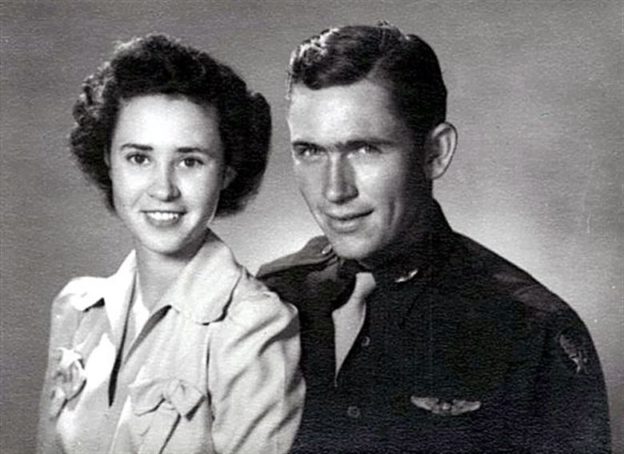
Memorial Day And Love Lost
Peggy S. Harris and 1st Lt. Billie D. Harris were married for just six weeks before Harris deployed in World War II. His wife never saw him again. His plane was shot down and crashed into the woods near a small town in Normandy. It took Peggy 60 years to find his grave.
For many of us, the coronavirus shutdowns mean being separated from loved ones, and most of us are longing for a return to the social activities we once enjoyed.
But our inconveniences and hardships pale by comparison to the ordeals faced by those whose relationships were torn apart by war. Since 1775, the U.S. has lost 1.36 million of its people to warfare. And while the vast majority were young men, most of them left behind family, a lover, a fiancé, or a wife and children.
Here are a few snippets of wartime correspondence bearing testimony of the sacrifices made.
At the age of 23, Frank M. Elliott left Georgetown University to join the U.S. Army in 1943. From England, he writes to his wife:
May 6, 1944
Dearest Darling,All day I have been fighting the feeling which has been dominating me of late. I keep continually thinking of home and longing for home in the worst way. All your letters of how beautiful my daughter is becoming by the day. The realization that I am missing all these months and years of her formative growth is actually gnawing at my heart. . . .
I love you, Frank
Pauline “Polly” Elliott, 24, answers from the couple’s home in New Castle, Pennsylvania. They had a little daughter, DeRonda “Dee”.
May 28, 1944
Darling—
Here it is Sunday again — Sunday night. I think this is the most lonely time of the whole week for me. I am so darn lonesome for you, Frank darling. Oh I’m not the only one and I know it — there are millions just like me, wishing with all the strength of their hearts and minds for the return of peace and loved ones. — Dee is sleeping on this Sunday night, and the radio is playing old and beautiful music — and I am thinking of the Sunday nights to come when you will be listening to such music with me. — Took Dad to a ball game today — Dee went along — maybe she’ll learn to like baseball as well as her Daddy does — I’ll bet that she will.
I adore you, Polly
A week later, she writes to him:
June 5, 1944
Darling,
. . This is a beautiful summer evening, darling. I am sitting at the kitchen table (and not even noticing the noise of the refrigerator) from which place by merely lifting my head and looking out the window I can gaze upon a truly silvery, full moon. It’s beautiful, dear — really beautiful, and it has succeeded in making me very sentimental. I had begun to think that I was becoming immune to the moon’s enchantment — so often I have looked at it without you and to keep myself from going mad told myself “It’s pretty, yes — but, so what?”. . . That’s not the way it really is though, darling — the sight of that shining moon up there — the moon that shines on you, too — fills me with romance — ; and even though it’s just a dream now, it’s a promise of a glorious future with one I love more than life. The darned old moon keeps shining for us, darling — and even as it now increases that inescapable loneliness, it also increases my confidence in the future. I truly love you . . .
Frank M. Elliott was killed the next day, June 6, 1944 (D-Day).
Here’s a letter written by a girl from Boston:
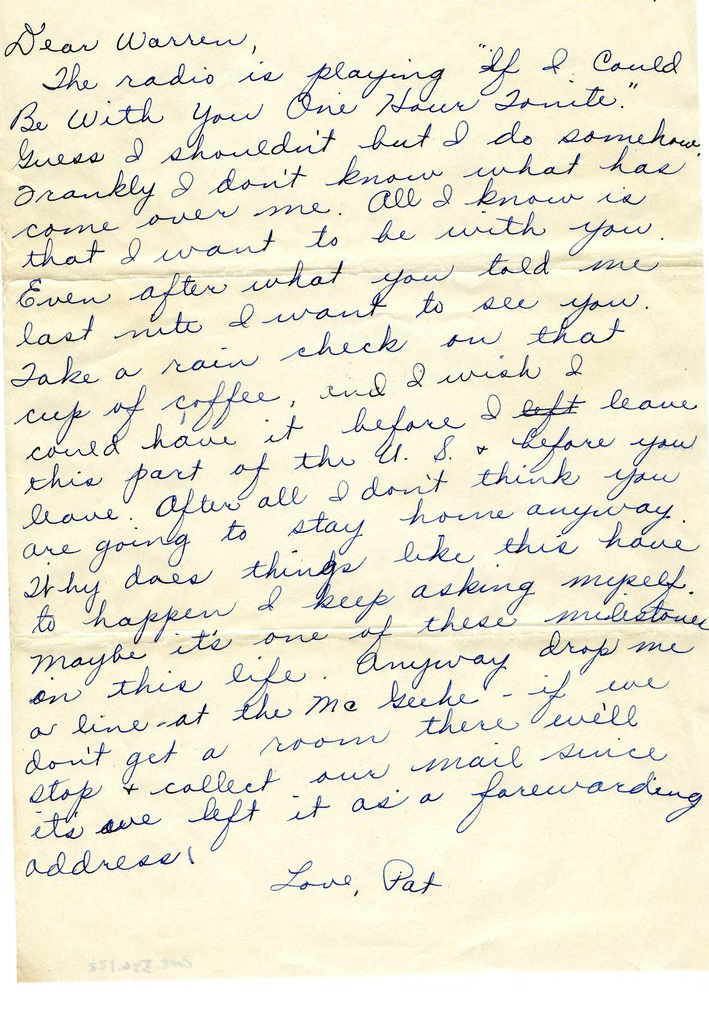
A letter from Barth, Germany, dated May 10, 1945:
Sweetheart,
At last I can write you and say just what I please. I don’t know whether this will reach you before I get home, but it’s worth taking the chance. You cannot realize the joy I have experienced at being liberated, and the prospects of being with you soon. The Germans pulled out of here on April 30th, and we took over. The Russians arrived on May 2. Since then we have been impatiently waiting to get out of here…
…It has been a long time and you have not been out of my thoughts for one minute. I’ll close now, sweetheart, hoping and praying that we will be together very soon for all time. I love you with all my heart.
Your loving husband,
Arnold
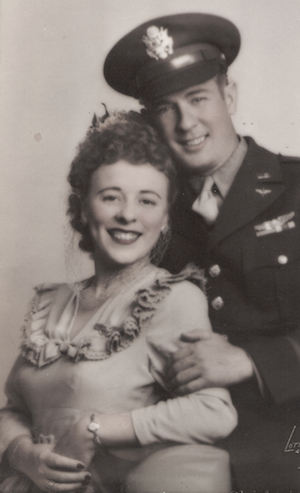
Lieutenant Arnold L. Gray and Hazel J. Gray were reunited and lived a happy life after the war.
Here’s an excerpt from a letter written by 23-year-old Lt. Richard G. Fowler, a U.S. Army Air Forces navigator from Minnesota, to his wife Cornelia.
May 25, 1944
My darling Cornie —
This is my first letter to you in almost five weeks! And I’m writing it not knowing when I’ll be able to mail it, since believe it or not, I’m behind enemy lines.
Fowler’s B-24 bomber had been shot down over the Balkans. 8 crewmen where killed, but Fowler and another man were able to bail out on parachutes.
When I was certain the chute was open, I looked up and saw the white silk billowing and swaying in the wind. It was very quiet and you have no sensation of falling until you near the ground—just floating in space. My face and right hand had been burned quite badly and hurt like the very devil. A thousand thoughts ran through my head as I was falling. It took about ten minutes before I hit the ground so I did have time to think. First of all I wondered what you would think not hearing from me for a long time—I was quite certain I would be captured by the Germans and taken to a prison camp in Germany.
Lt. Fowler survived the war and was eventually reunited with his wife. Many other families were not so lucky:
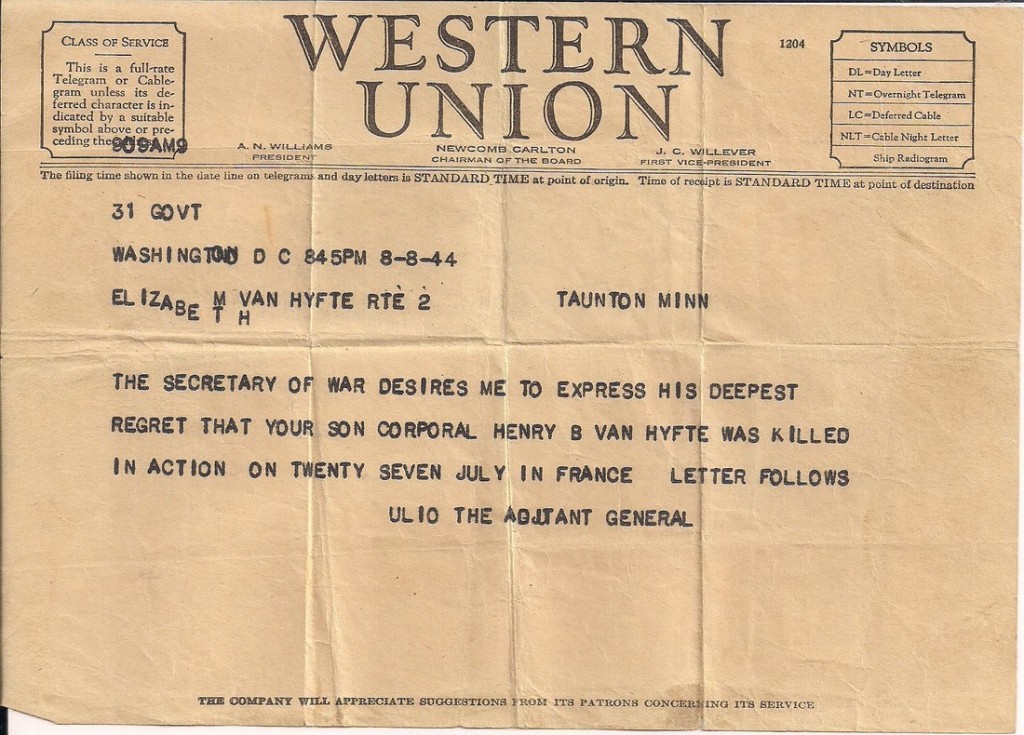
This Memorial Day, let’s also consider those whose hopes for love and happiness were crushed and destroyed when war took the love of their life, never to return, leaving behind a void never to be filled.
– 30 –



